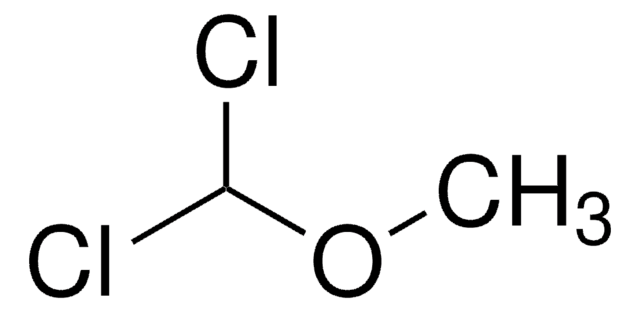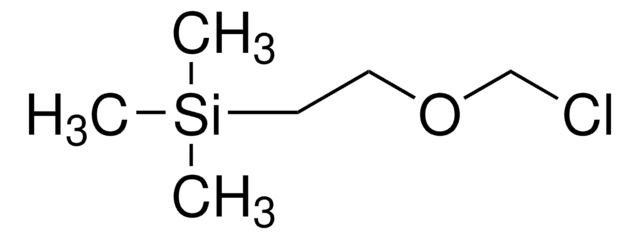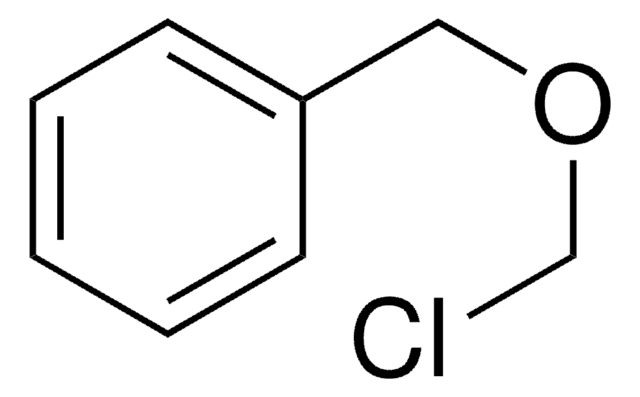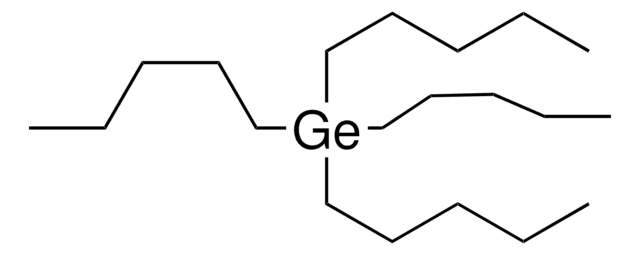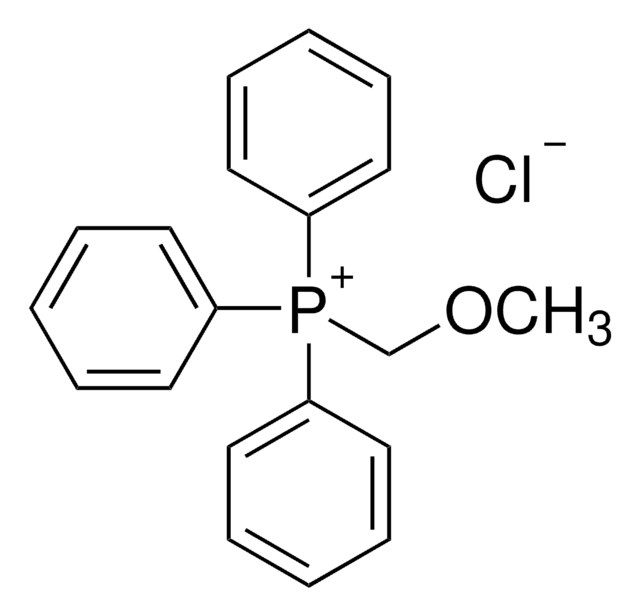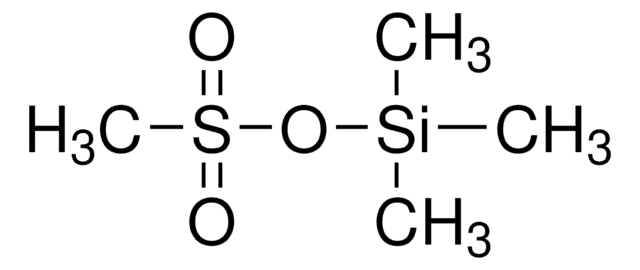推薦產品
等級
technical grade
品質等級
蒸汽壓力
3.55 psi ( 20 °C)
化驗
≥92.5%
形狀
liquid
折射率
n20/D 1.396 (lit.)
bp
55-57 °C ((lit.))
55-57 °C (lit.)
密度
1.06 g/mL at 25 °C (lit.)
1.06 g/mL at 25 °C
官能基
chloro
ether
儲存溫度
2-8°C
SMILES 字串
COCCl
InChI
[1S/C2H5ClO/c1-4-2-3/h2H2,1H3]
1S/C2H5ClO/c1-4-2-3/h2H2,1H3
InChI 密鑰
[XJUZRXYOEPSWMB-UHFFFAOYSA-N]
XJUZRXYOEPSWMB-UHFFFAOYSA-N
尋找類似的產品? 前往 產品比較指南
應用
Chloromethyl methyl ether (MOM-Cl) can be used as a reagent:
- For the introduction of the methoxymethyl (MOM) protecting group by converting alcohols to methoxy methyl (MOM) ethers.
- To prepare some methoxymethyl group containing metal complexes coordinated to carbonyl and dipyridyl ligands.
- In the preparation of fluorene/chloromethyl methyl ether cross-linked polymers by Friedel-Crafts polymerization.
訊號詞
Danger
危險分類
Acute Tox. 1 Inhalation - Acute Tox. 4 Dermal - Acute Tox. 4 Oral - Carc. 1A - Flam. Liq. 2
儲存類別代碼
3 - Flammable liquids
水污染物質分類(WGK)
WGK 3
閃點(°F)
60.8 °F - closed cup
閃點(°C)
16 °C - closed cup
個人防護裝備
Eyeshields, Faceshields, Gloves
客戶也查看了
Martin A Berliner et al.
The Journal of organic chemistry, 70(23), 9618-9621 (2005-11-05)
[Reaction: see text]. Zinc(II) salts catalyze the reaction between acetals and acid halides to provide haloalkyl ethers in near-quantitative yield. Reactions from millimole to mole scale are typically complete in 1-4 h with 0.01 mol % catalyst. The solutions of
Bis(chloromethyl) ether and technical-grade chloromethyl methyl ether.
Report on carcinogens : carcinogen profiles, 12, 71-73 (2011-08-19)
Jung-Jae Lee et al.
Chemical communications (Cambridge, England), (15)(15), 1962-1963 (2009-04-01)
N-Alkylation of a fluorescent macrocyclic amine in aqueous micellar solution produces enhanced emission; the reaction with chloromethyl methyl ether exhibits autocatalysis.
Bis(Chloromethyl) ether and technical-grade chloromethyl methyl ether.
Report on carcinogens : carcinogen profiles, 11, III56-III57 (2004-01-01)
A Blair et al.
Cancer causes & control : CCC, 8(3), 473-490 (1997-05-01)
Epidemiologic evidence on the relation between reactive chemicals and cancer is reviewed. These highly reactive chemicals (acrylonitrile; bis[chloromethyl]ether and chloromethyl methyl ether; 1,3-butadiene, ethylene oxide; formaldehyde; mustard gas; sulfuric acid; and vinyl chloride) vary in use and exposure. All are
Global Trade Item Number
| 庫存單位 | GTIN |
|---|---|
| 100331-25G | 4061838663153 |
| 100331-100G | 4061838663146 |
我們的科學家團隊在所有研究領域都有豐富的經驗,包括生命科學、材料科學、化學合成、色譜、分析等.
聯絡技術服務





